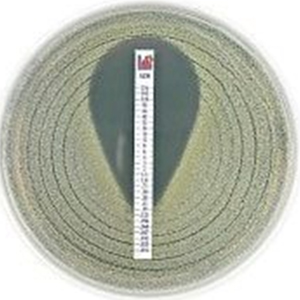
In microbiology, the minimum inhibitory concentration (MIC) is the lowest concentration of a chemical, usually a drug, which prevents visible growth of bacterium. MIC depends on the microorganism, the affected human being (in vivo only), and the antibiotic itself.
The MIC is determined by preparing solutions of the chemical in vitro at increasing concentrations, incubating the solutions with the separate batches of cultured bacteria, and measuring the results using agar dilution or broth microdilution. Results have been graded into susceptible (often called sensitive), intermediate, or resistant to a particular antimicrobial by using a breakpoint. Breakpoints are agreed upon values, published in guidelines of a reference body, such as the U.S. Clinical and Laboratory Standards Institute (CLSI), the British Society for Antimicrobial Chemotherapy (BSAC) or the European Committee on Antimicrobial Susceptibility Testing (EUCAST).[2] There have been major discrepancies between the breakpoints from various European countries over the years, and between those from the European Committee on Antimicrobial Susceptibility Testing (EUCAST) and the US Clinical and Laboratory Standards Institute (CLSI).
While MIC is the lowest concentration of an antibacterial agent necessary to inhibit visible growth, minimum bactericidal concentration (MBC) is the minimum concentration of an antibacterial agent that results in bacterial death. The closer the MIC is to the MBC, the more bactericidal the compound.

